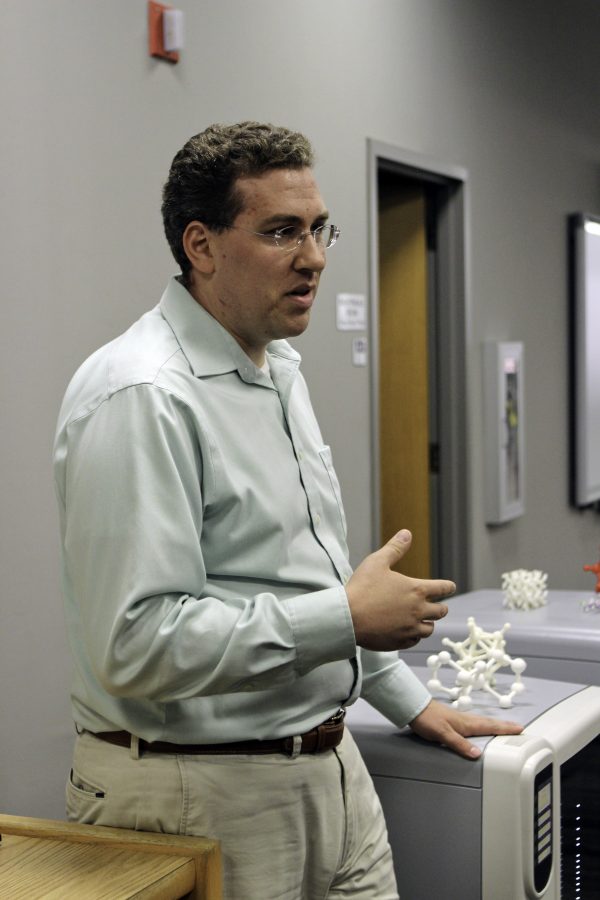Vincent Scalfani, an assistant professor and science and engineering librarian, led the participants in an informational session on the topic of 3-D printing, utilizing a computer lab called Scholars’ Station located in the back of Rodgers Library.
“3-D printing is an additive manufacturing process,” Scalfani said. “Essentially what this means is that objects are built by adding layers together. 3-D printing can create objects through a variety of methods and materials such as melting plastic or solidifying resins with ultraviolet light.”
When asked about who can use the 3-D printing equipment, Scalfani said, “All UA students, faculty and staff. Our equipment, as well as plastic consumable material, is completely free to use after a short training course offered by Rodgers Library.”
After becoming acquainted with how 3-D printing works, the interns moved to the 3-D printing lab to learn how to use the machinery and watch the equipment at work. After selecting a particularly complex model to print, the students decided to retry a print job with a much simpler molecule as a model. After a few minutes, the printer began to start its work. Scalfani told the group the model would take about 15 hours to become a finished product.
The students asked a variety of questions while waiting for the printer to start. Among them was, “Can you print a 3-D printer with a 3-D printer?” As it turns out, not only can that be done, it has already been done by a UA student. The student who succeeded in accomplishing this now owns her own 3-D printer made from 3-D printed parts, though she had to order the electronics that make the printer function separately.
It was also asked if color models could be created. The printers that the University owns only print in an ivory-white color. Due to extra cost, the University declined getting the color version of the printers.
Lydia Eubanks, a junior majoring in mathematics, said she plans to use 3-D printing in her future classrooms.
“As a future math teacher, I would love to use my new understanding of the concept of 3-D printing in order to give my students a better understanding of how math can be used in the real world through interesting technologies like 3-D printing,” Eubanks said.
Eubanks, along with the other participants, is a part of the Noyce summer internship program, an annual internship available to students interested in applying to become Noyce Scholars, the official designation for a student who has been granted funds from the $1.5 million grant awarded to the University by the National Science Foundation.
Participating students are paid $450 weekly for the three-week program. Those who are selected to become Noyce Scholars are awarded $16,000 per year for two years for undergraduates and a one-time $17,000 stipend for graduate students, offered to students who intend to teach in STEM areas of education.
Eubanks said the internship can also provide friendships.
“I definitely gained friendships through this program,” she said. “By the end of the internship, the 22 of us involved with the Noyce Scholars program had become like a tight-knit family. More importantly, I was able to connect with faculty members in the math, physics and chemistry department on a daily basis.”
James Harrell, professor emeritus of physics and astronomy, was a faculty participant in the program and helped organize the event.
“There is a critical shortage of qualified teachers in these areas, especially in Alabama,” Harrell said. “The Noyce summer internship program is designed to increase students’ interest in applying for a Noyce scholarship and becoming math, chemistry or physics teachers.”
Noyce interns also do other STEM related activities, many of which make use of the University’s technology and equipment.
“Interns participate in a variety of STEM activities such as 3-D printing, visiting UA research labs, UA telescope observing, participating in short technology courses, assisting with instruction at a local school and conducting a research project,” Harrell said.
“This is the second summer that the Noyce internship program has been offered,” Harrell said. “It has gotten very positive feedback from participants and has resulted in several interns being awarded Noyce scholarships.”









